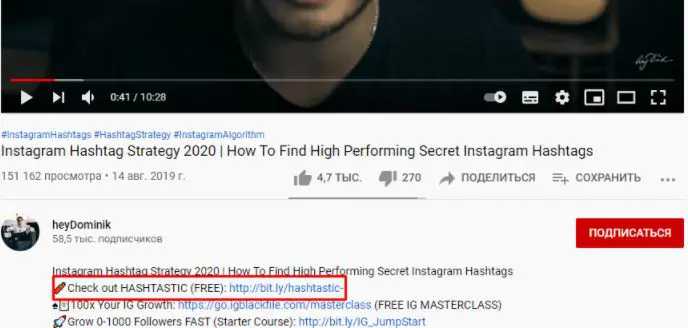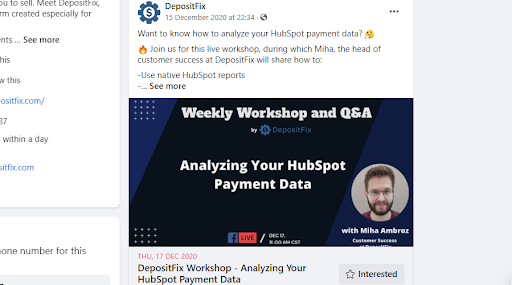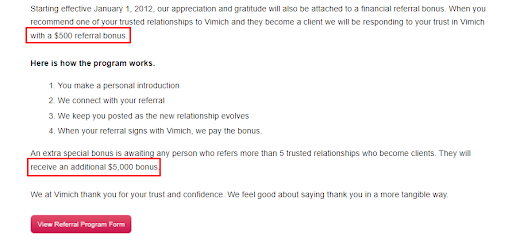Types of Marketing Campaigns
Marketing campaign is a series of activities that pursue a certain goal and are part of your bigger marketing strategy. Your annual marketing goals may include increasing brand awareness, generating leads, getting referrals. But they will remain simply nice words if you don’t launch specific campaigns that will help you implement your strategy step by step. How many types o fmarketing campaigns can you apply?
Below you will read about 8 campaign types that are used by successful companies and are proven to drive results:
- Account based marketing
- Affiliate marketing
- Call center marketing
- Celebrity marketing
- Drip marketing
- Event marketing
- Partner marketing
- Referral marketing
Marketing campaigns aren’t limited only to these 8 types. In fact, you can find more than 150 of them on the internet. However, most of them are tactics rather than campaign types or are too old to be discussed these days.
8 types of marketing campaigns that stood the test of time
#1 Account Based Marketing
When companies start to blog, they pick keywords, check their search volume/relevancy/difficulty, and publish articles around them. Then they wait until interested prospects will search for those keywords, find their website, and consider their products/services.
Account based marketing starts not by finding ideal keywords for your website but ideal customers for your business. It starts with defining your ICP (ideal customer profile) and making a list of companies who will benefit from your products/services. Afterwards, you create targeted, personalized content that is focusing on their specific needs.
Where do you find your ideal prospects? Through online tools that are specialized in similar services. Here’s one example below.
Albacross helps you implement ABM strategy in two ways. First, it allows you to identify your website visitors who haven’t turned into leads. Thus, you will know which companies are interested in your website but haven’t taken any action yet. Contacting them with a personalized message should be your next step.
Second, the tool allows you to search for your ideal customers by number of employees, revenue, location, etc. After getting access to the list, you pick the most relevant companies, research their activities, and contact via super-targeted offers.
#2 Affiliate Marketing
Compensating employees based on customers generated, not hours worked is an idea any business owner will find attractive. In affiliate marketing, people who work with you are your partners, rather than employees. Once a new customer starts using your product/service after clicking the affiliate link, your partner earns a commission.
According to Make A Website Hub, affiliate marketing ensures on average 23% of the merchant’s revenue. This type of marketing works mostly for SaaS companies in the B2B sector. That’s because they don’t spend money on creating a physical product and thus can afford offering high commission rates. Consequently, the affiliates are more motivated to promote their product.
For example, Diffy is a visual regression testing tool for website development and marketing agencies. An affiliate program is available on their website and they offer 25% commission every month for every customer that affiliates generate.
To launch and manage your affiliate program, you will need an affiliate tracking software. It will help you generate and track affiliate links, analyze performance, manage transactions, etc.
#3 Call Center Marketing
Call center marketing isn’t about building a team of customer support specialists and waiting for customers to contact for help. It’s when you decide to hire an agency and outsource cold calling services.
If you think that reaching out to prospects via phone is a thing of the past, check out a few cold calling statistics below:
- 69% of buyers report accepting one or more cold calls during 2019.
- ~51% of business owners say they’d rather hear from sales reps via phone rather than email, fax, and other media.
- Representatives must make an average of six calls to sell a product or a service.
B2B sellers still see value in this type of marketing and that’s why cold calling services exist and grow. And that’s for a good reason. B2B call centers don’t dial random numbers at random hours and tell how great your product/service is.
They pick contacts from large databases that are accurate and up to date. Choosing the most effective days and hours to initiate the call also plays a huge role in a successful call.
Call centers also know call opening and handling best practices and don’t make the customer hang out the phone.
In short, B2B call centers will set appointments between you and your ideal prospects and you won’t spend money on low-performing or time-consuming tactics.
#4 Celebrity Marketing
While celebrity marketing is mostly popular among B2C companies, B2B companies also consider this type to promote their products/services. Instagram (79%), Facebook (46%), and Youtube (36%) are the top platforms businesses choose for this purpose. And the final decision depends on what is your offer and where is your ideal audience.
For example, HP, an American IT company that produces computers and related supplies, is targeting both B2B and B2C companies (and you probably have HP computers at your office).
They partnered with two influencers – Samantha Peszek, an American artistic gymnast and Sara Mearns, an American ballet dancer. Youtube became their main channel for the campaign and videos were recorded showing the influencers with HP computers. The videos were shared to social networks as well and ensured a very high engagement rate.
Hashtastic, an Instagram hashtag tracking tool, is also leveraging an influencer’s audience to promote their product. And the promotion channel is again Youtube.
HeyDominik is a Youtube channel by an author who talks about Instagram marketing trends and best practices. Throughout his videos, he mentions Hashtastic and its features frequently and encourages viewers to sign up for free.

Even the most boring businesses will definitely find an influencer that will describe their product/service in the best light. The more authenticity in your campaign, the more credible it will appear to your potential customers.
#5 Drip Marketing
When visitors provide their email in return for a live webinar, masterclass or something, they are seeking knowledge. They aren’t ready to start using your service or talk to a sales rep. It takes time until familiarity and trust are built and a drip campaign’s role is to help you with it.
Drip campaign is a series of emails that you send automatically at specific intervals to reach a specific result (mostly conversion).
For example, when your visitor downloads an eBook, that’s where the drip campaign starts.
You first send a thank you message and attach the eBook to the email. Then you send another resource related to the topic your lead is interested in. Your next email may contain case studies or testimonials by your happy customers. In the next email, you invite them to try your software for free or book a consultation. The last email may be a follow-up or offer special terms to start using your services.
You can change the flow depending on how the user reacts to your emails. If they are replying, clicking, reading actively, you can continue with the regular flow. If they are indifferent, you might offer help or simply delete the contact from your list. The process is automated and once you set the flow, you don’t have to write or send any emails manually.
Don’t forget that 59% of B2B marketers say email is their most effective channel for generating revenue. And a drip marketing automation can boost conversion rates by 53%.
#6 Event Marketing
In the information age, events don’t have to be offline and require travel to a different country. Even without a webinar software, using your phone’s and Facebook feature, you can go live and have people join you. If you have never launched an online event/webinar campaign, you have lost potential leads to your competitors who have. Here’s why:
- 87% of B2B marketers say in-person events are a critical component to their company’s success.
- 65% of B2B marketers plan to reallocate some or most of their live event budgets to online events, such as webinars.
- 55% of B2B organizations spend over 21% of their marketing budgets on events.
DepositFix is a HubSpot integrated donation system that helps accept donations using HubSpot forms. They are actively leveraging event marketing for their B2B business and use Facebook, LinkedIn, Youtube to get exposure. A live Q&A with SaaS marketing experts is the most popular content format. The topics include nonprofit marketing, HubSpot functionalities, etc.

There’ no magic number on how often to run webinars or how long they should last. But you can start with once or twice a month and allocate 30-45 minutes.
#7 Partner marketing
Partner marketing is broader that you might think. Some companies may simply do link exchange and share each other’s blog posts on their social network accounts. Other companies may certify other businesses to sell their products. Both are forms of partner marketing.
However, if partners want to reach each other’s audience and increase exposure, the most powerful tool is content. For example, you may partner with a company and create a data report, webinar or eBook and promote it together. It all starts with understanding your campaign goal and reaching out to a company that shares a similar audience. Here’s a great example:
Sprout Social, a social media management tool, leverages co-marketing by cooperating with other SaaS companies. They partnered with Ion Interactive, a content platform and launched a free webinar on creating interactive posts for social engagement.

Sprout Social also partnered with Bitly, a URL shortener and created an eBook on enterprise social media. According to the company, they have managed to generate around 25,000 new leads from co-marketing efforts and still continue to fine-tune their processes.
#8 Referral Marketing
Referral marketing combines the best of two worlds: quality leads acquired in a cost-effective way. Especially in the B2B sector where the buying cycle is usually long and closing high-ticket sales is usually tough, having a referral program becomes a must.
- Referral leads convert 30% better than leads generated from other marketing channels.
- 84% of B2B decision-makers start the buying process with a referral.
- Referred customers have a 16% higher lifetime value.
In the B2B sector, it’s hard to earn referrals by promising a thank you message or a $25 gift card. Every successful referral may bring you tens of thousands of dollars and your reward to the referrer should also be tangible. Here’s an example.
Vimich Traffic Logistics is a company providing transportation logistics and freight management services. When you recommend a partner to Vimich and they become a customer, you get a $500 referral bonus. If you refer more than 5 customers, you will get an additional $5,000 bonus.

A referral software will cost you less than $100 monthly. It is less than the money you spend on ads every month to get leads that aren’t qualified.
Conclusion
Any B2B company may start with these marketing campaign types and there are no exceptions. The question is whether you will take into account the key elements that are the guarantee of your success.
Every successful campaign should have:
- Target audience (you may have multiple buyer personas but one campaign should focus on only one group)
- Clear goal (free trial, website visit, consultation request, eBook download, etc)
- Budget and resources (additional software costs, team members included, hours worked, etc)
- Channels (an influencer may promote your service/product on multiple social networks. Or you might send drip messages via email and SMS)
- Metrics (a unique campaign URL will help you understand how many people clicked that campaign link. You may create it via Campaign URL Builder, a link shortener tool or your CRM may auto generate a unique URL. If your campaign is on social media, you should track in-built stats as well, e.g. reach, shares, comments, depending on the goal).
Following these steps doesn’t guarantee 100% success or 10x ROI. But you will have full control over the situation, make small changes to improve performance, and be more experienced when developing your next campaign.





Marketing campaigns aren’t easy, but they’re valuable and integral to growing a successful brand and business.